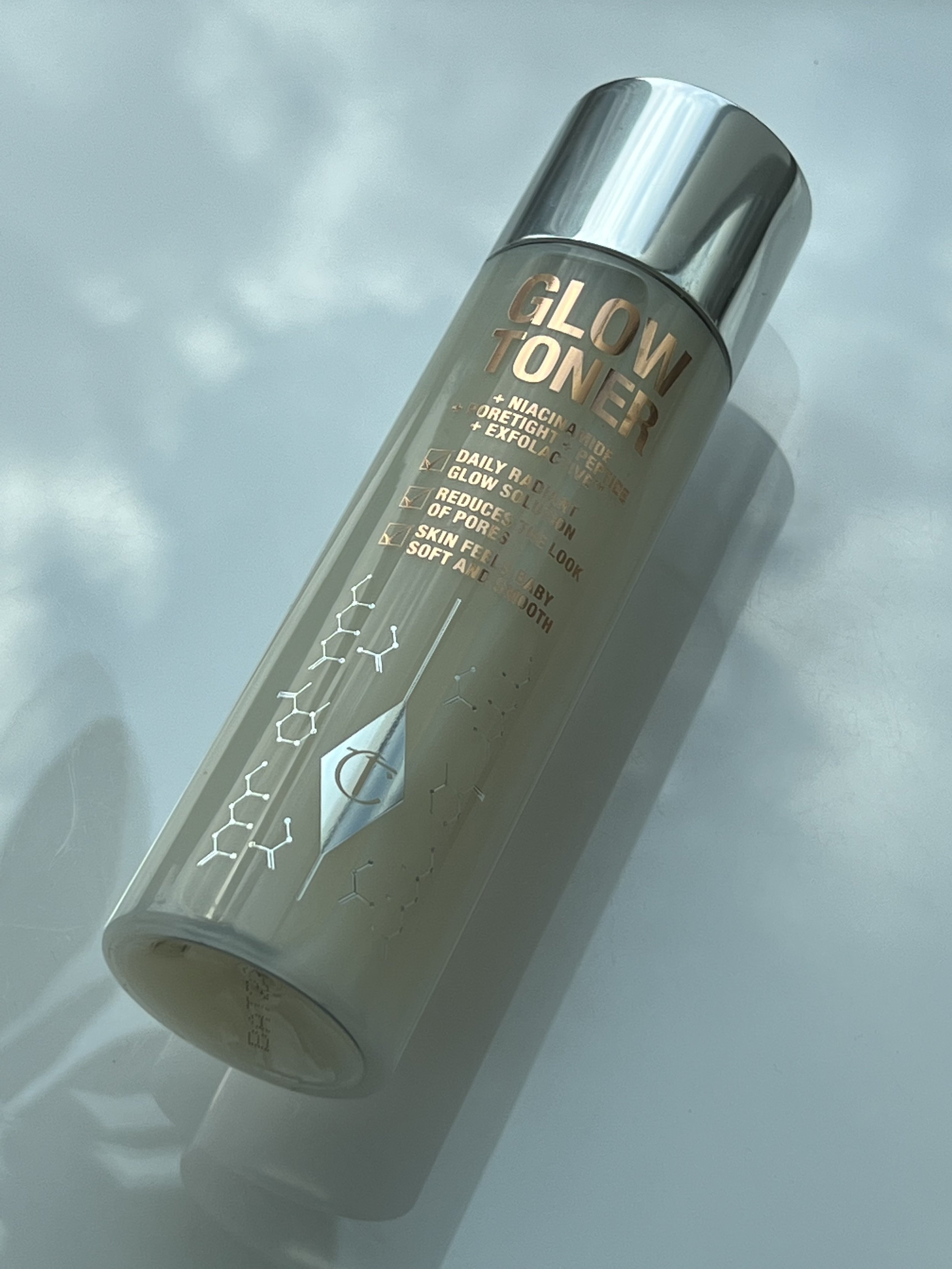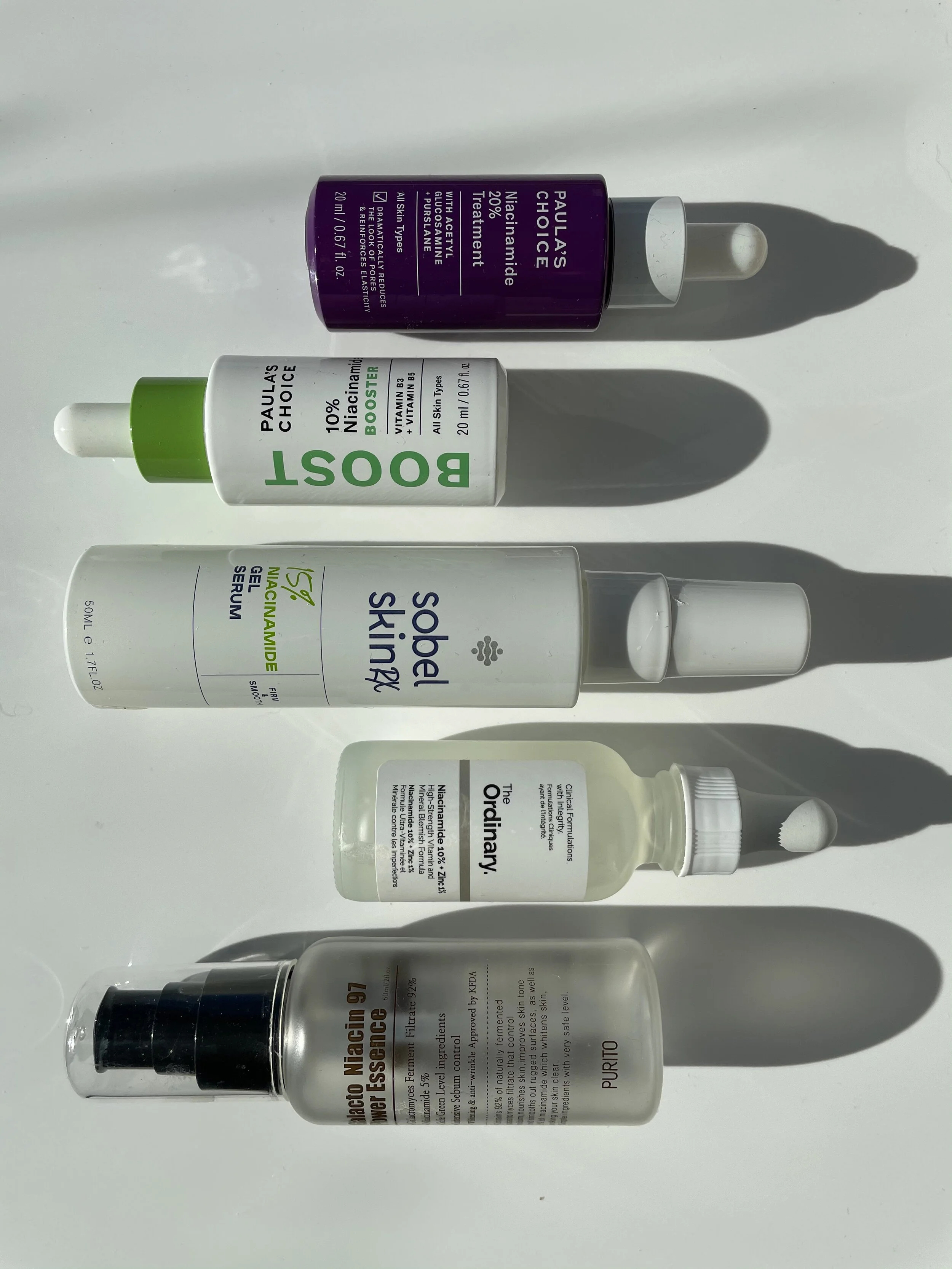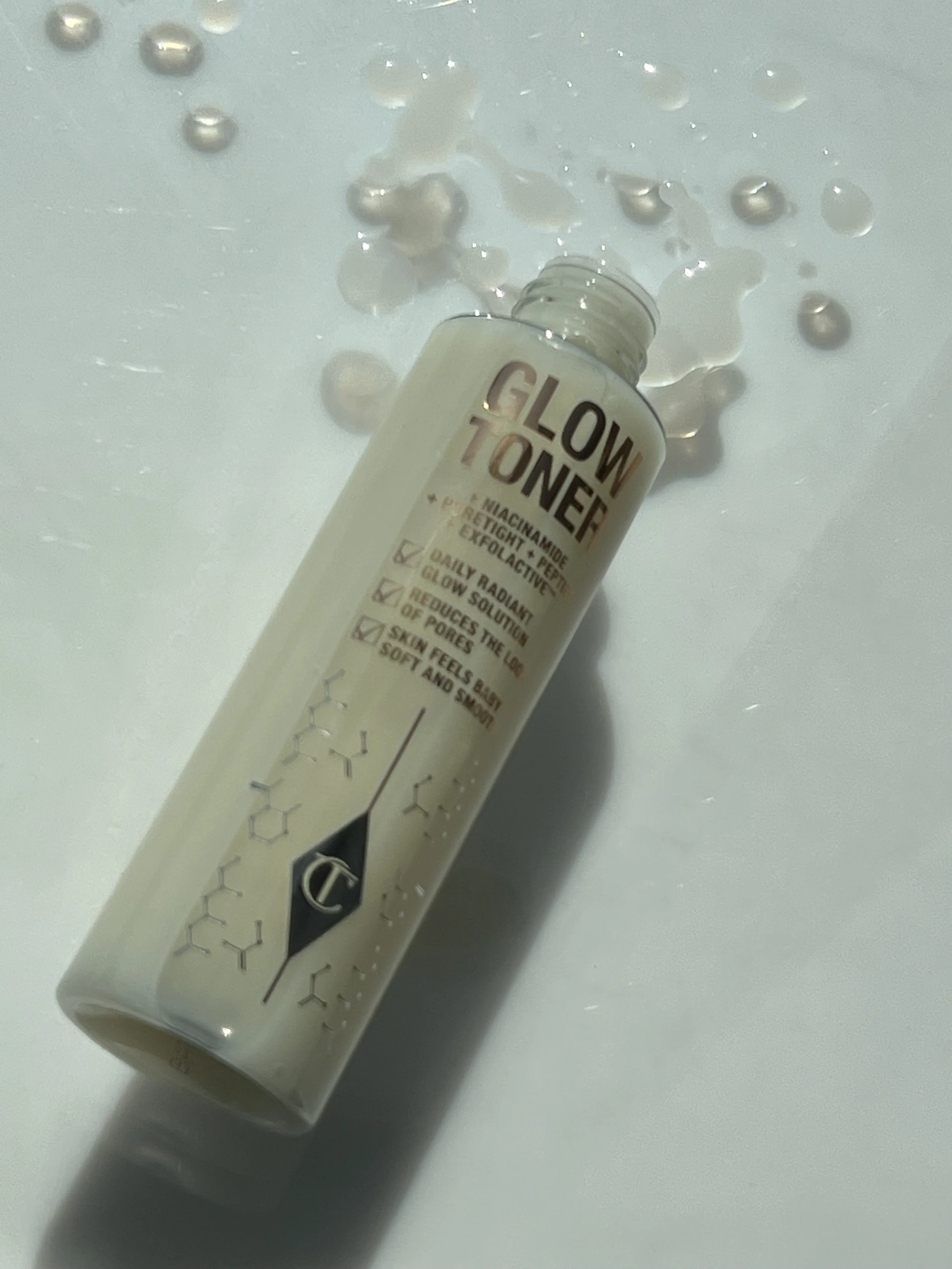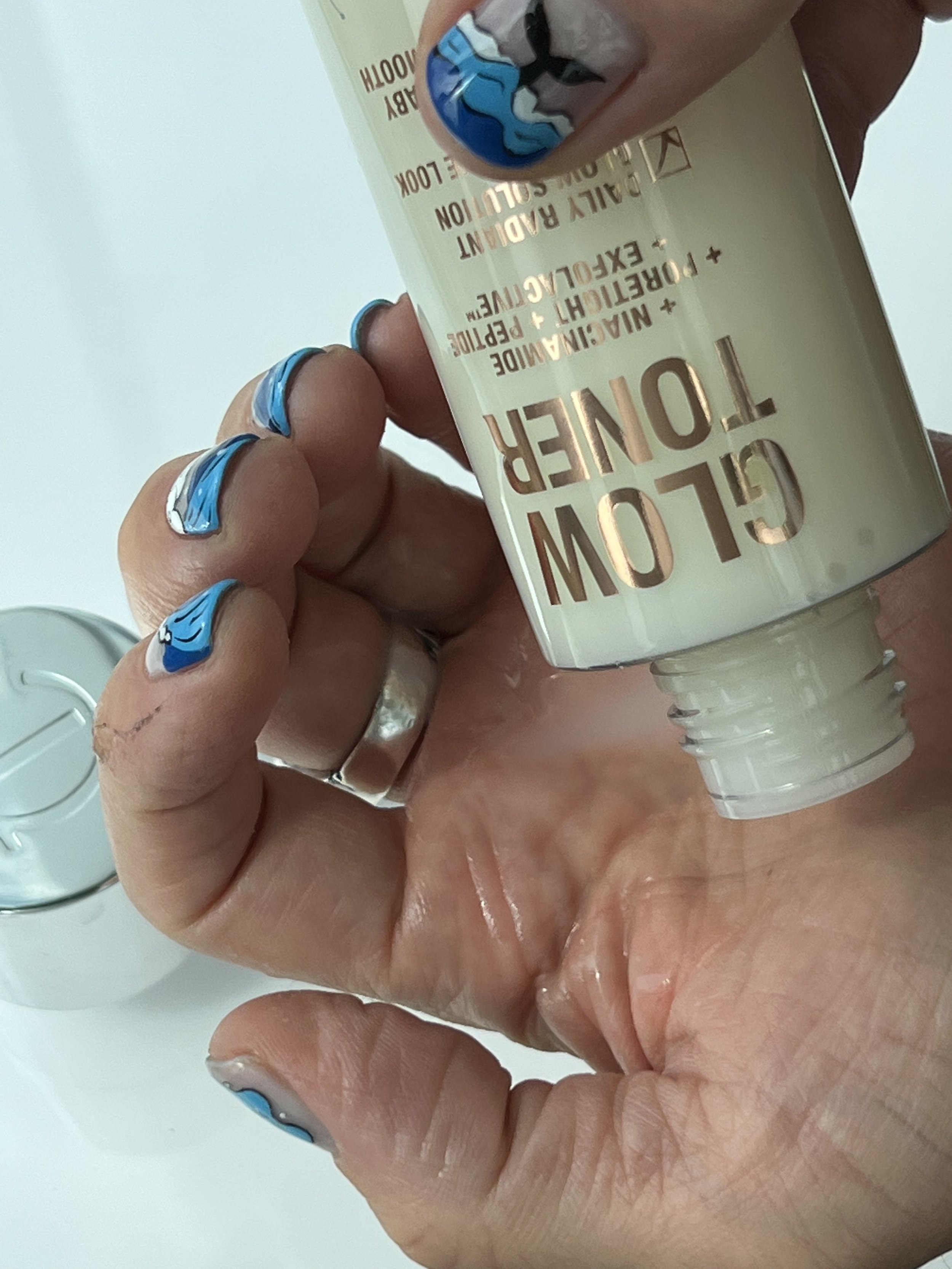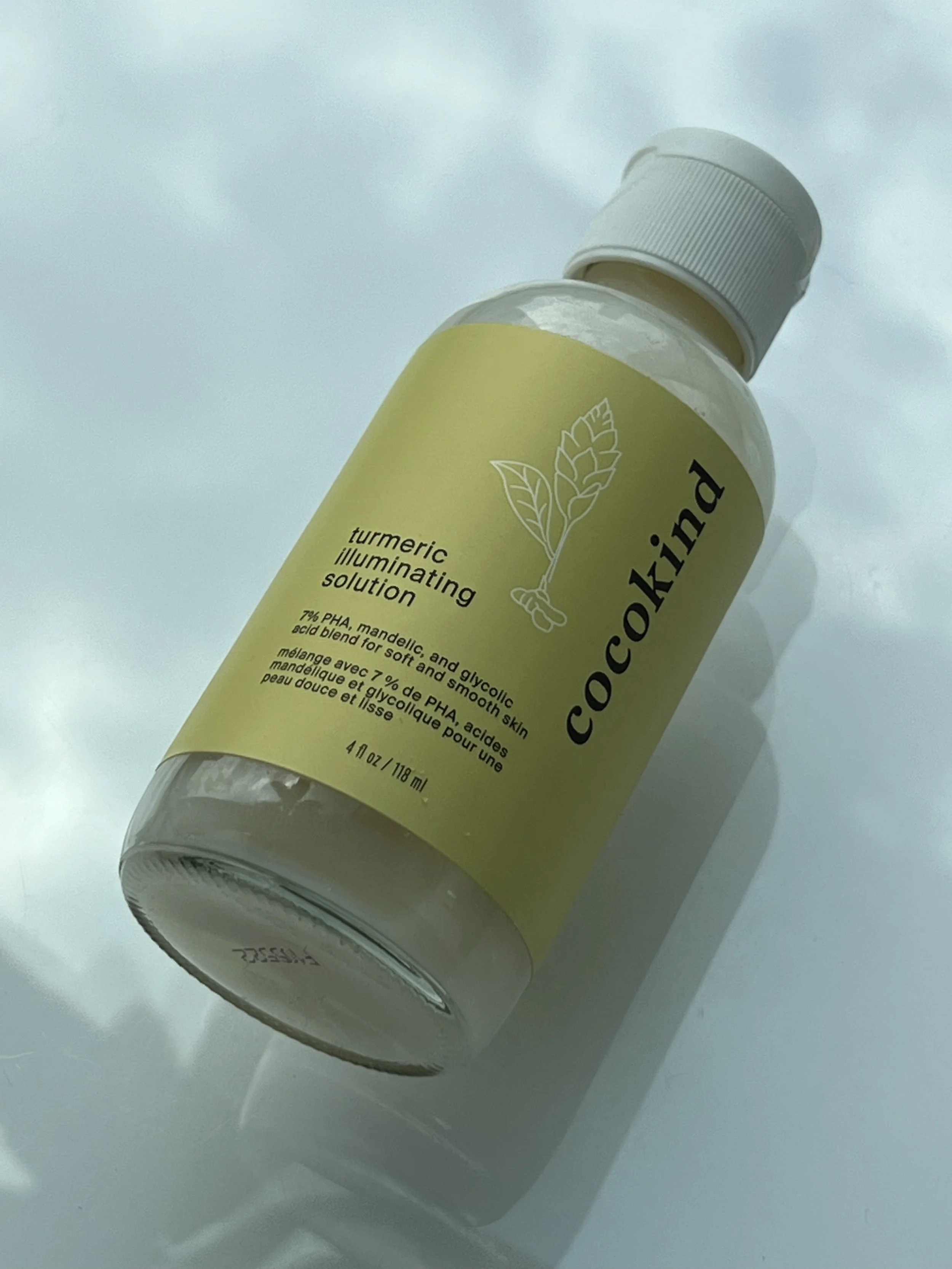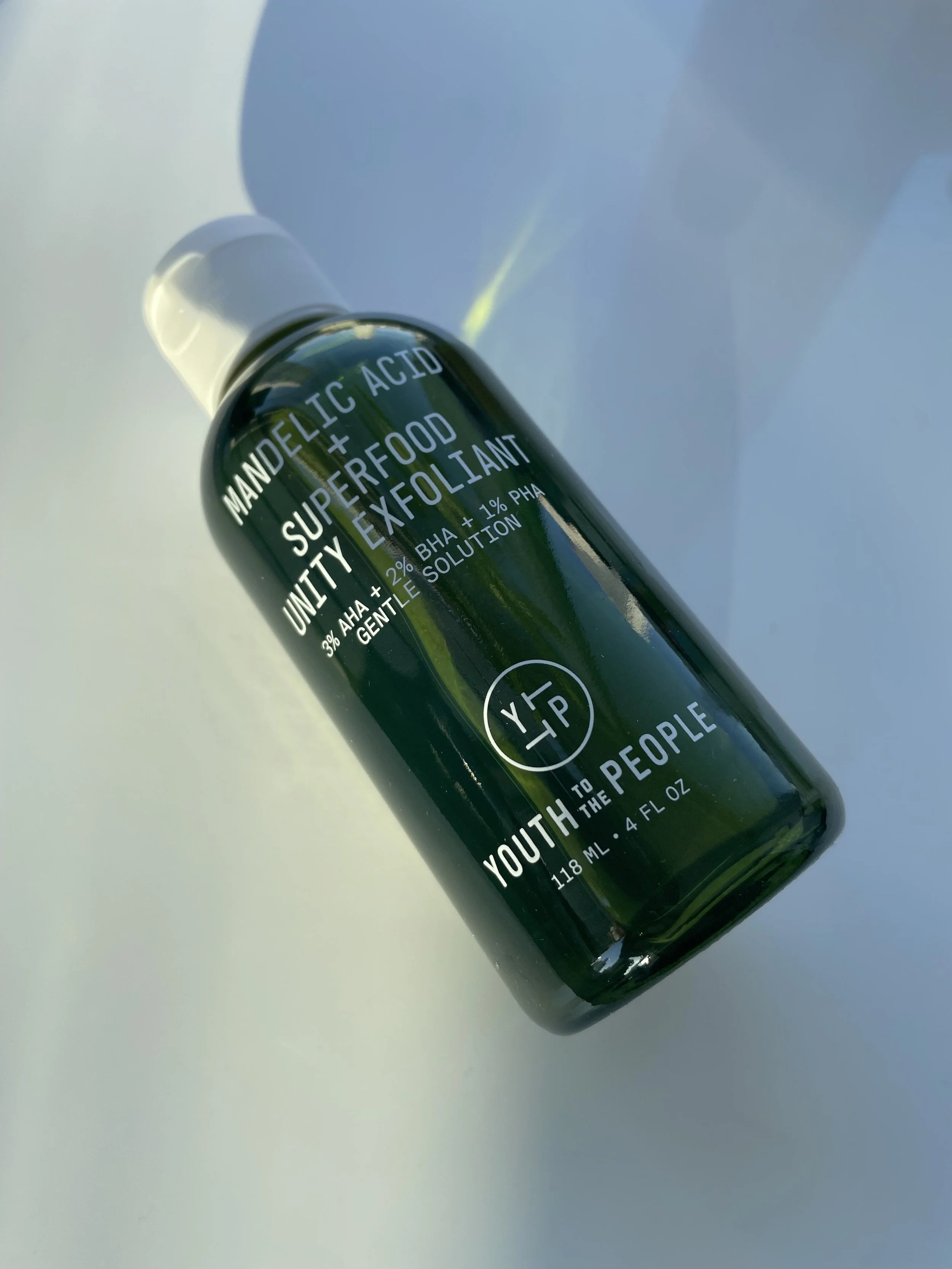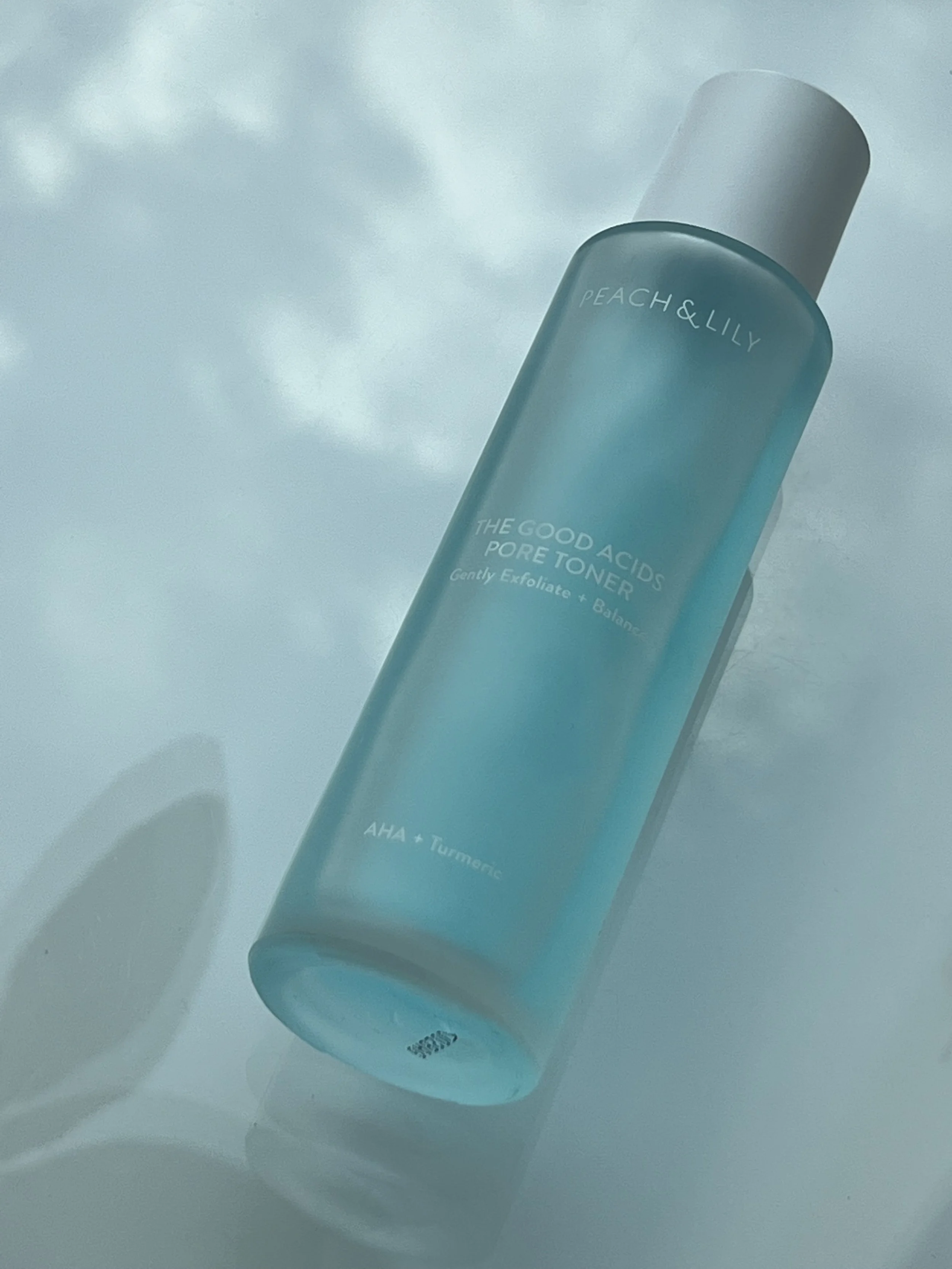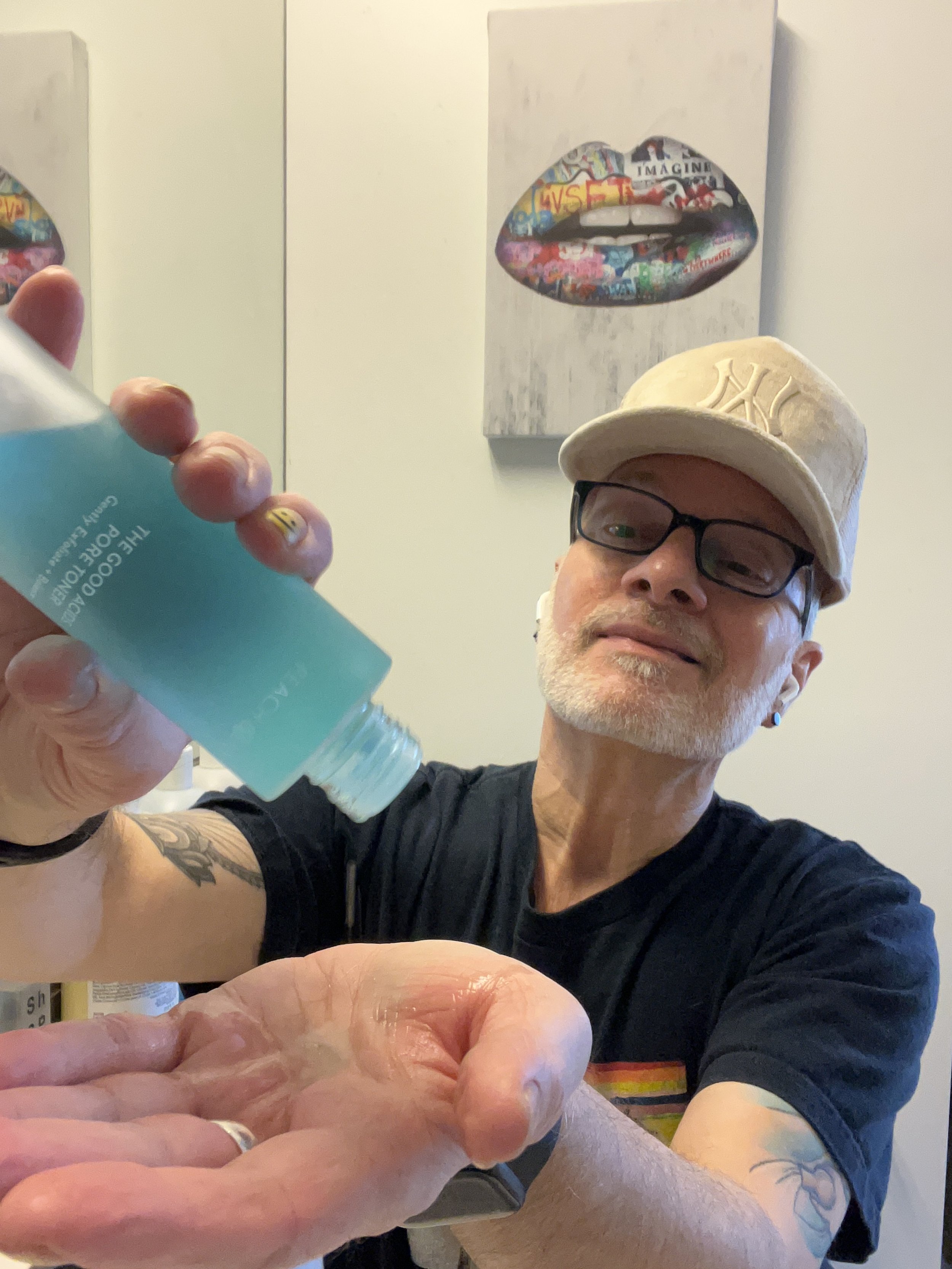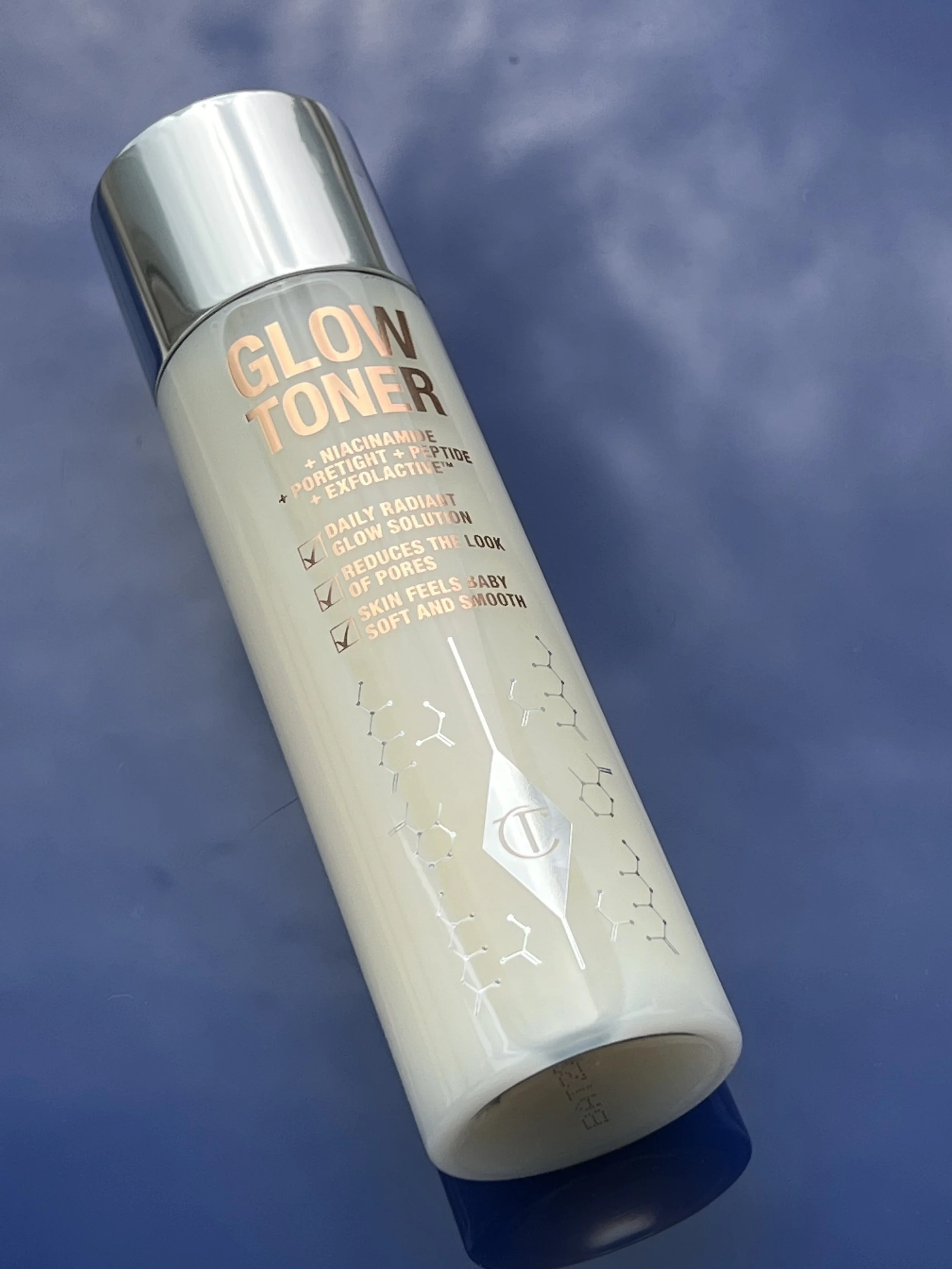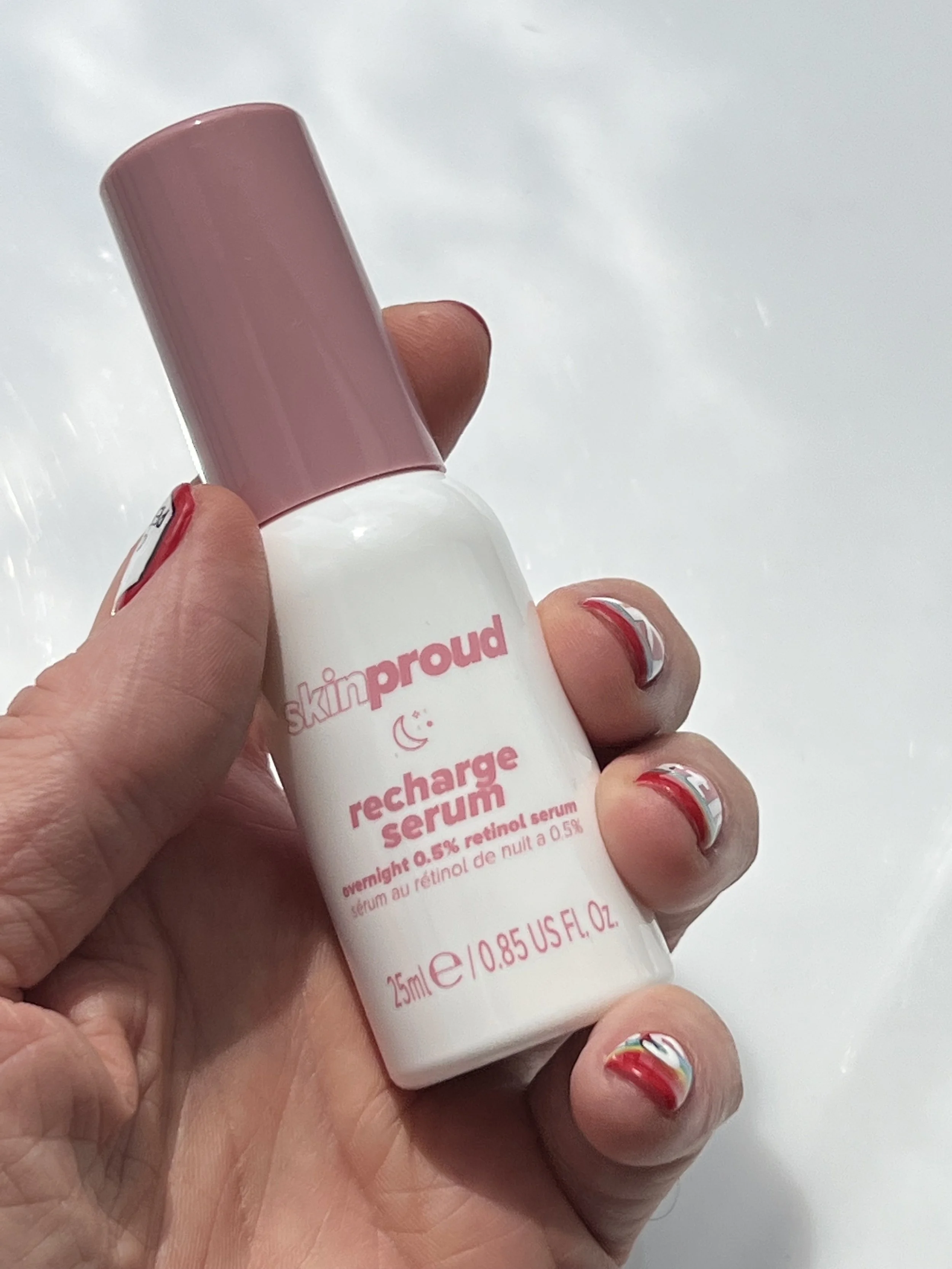BAD, BETTER, BEST: THE TRUTH ABOUT 3 TREATMENT TONERS – BEST EXFOLIATING TONER WITH GLYCOLIC ACID, BEST BRIGHTENING TONER, WHY IS MY SKIN SO DULL?
Just about every day for the past three months, I’ve gotten out on a Citibike to explore Brooklyn and the rest of the City.
My favorite time of day to ride is in the early morning before the rush hour traffic ramps up. I’m usually on the bike between 6:45 - 7 a.m. Any later and I’m battling MTA buses, garbage trucks and distracted drivers.
Those morning rides are literally everything. It’s quiet and uncharacteristically un-chaotic; the hustle and bustle of the City hasn’t kicked in yet, the City is still asleep.
Riding gives me the freedom to think – about a lot of things. Client work, the blog, my relationships, places I want to see and even new nail art! I see inspiration everywhere, imagine all kinds of things I want to do as the “post-Covid Carmine” version of myself. I’ve long been called out for allegedly living like I’m dying. That’s more true today than ever!
When it comes to the Skincarma Blog and my work on my TikTok, YouTube and Instagram channels, I have long striven to be as objective and honest as I can be about the hundreds of products I try each year. I do like to keep it positive, focusing my energy on the good, even great, products that I come across. If I’m spending time to write or record a review of a face cream, Vitamin C serum, mineral sunscreen or cleansing oil for dry skin, I want to put effort into the products I love – and can subsequently recommend.
I don’t spend a lot of time on crappy skincare. Ask me about a particular product and if I’ve experienced it, I’ll tell you honestly what I think of it. If I think it’s awful, I’ll tell you why and give recommendations for better products. I just don’t want to write about it!
But on a recent ride, I was thinking I’ve spent a lot of time, money and effort lately evaluating treatment toners that brighten a dull complexion. Many of them are really well-formulated; some are good, some are great, and a handful really are just awful, for various reasons. And I thought why not a blog article and social reviews on three treatment toners in particular – a great one, a good one and, well, a pretty awful one. I decided to refer to them as “bad, better and best.” It seemed catchy.
I’ve reviewed two of the three on the blog previously – the Cocokind Turmeric Illuminating Solution and Peach & Lily’s The Good Acids Pore Toner. Both are relatively well formulated and supremely pro-skin health. I’ve refreshed the product reviews of each below.
The wild child of the trio is the Charlotte Tilbury Daily Glow Toner with Niacinamide. Until now, I had never tried a single product from the famous makeup artist’s brand. As I’ve said many times, it’s so important to know how to read an INCI. I could have evaluated the Glow Toner well enough from afar, enough to know it’s not worth $55. But I really wanted to give it try. My review of it is first below.
I haven’t always been into acid-powered treatment toners. But as I’ve gotten older, I find that my complexion gets dull more frequently. And what’s the best way to fix dull skin? Acids! All kinds of acids can have a significant effect on the skin — instantly and over time.
Alpha hydroxy acids, or AHA’s like Glycolic Acid, Lactic Acid and Mandelic Acid are among the most common for their ability to exfoliate skin of the dead surface skin cells that dull the complexion. Like AHA’s, Niacinamide and Vitamin C are superb for brightening the skin, too. A cocktail of these actives should be incorporated into your daily skincare routines — morning and evening.
For my top picks of the best Niacinamide serums for face, have a look at my product reviews here. And, take a look at my collection of the best Vitamin C serums on the blog here.
With that, let’s take a look at my choices for the bad, better and best treatment toners for brightening the skin…
THE BAD ONE
Charlotte Tilbury | Daily Glow Toner with Niacinamide
I have never tried anything from UK makeup artist Charlotte Tilbury’s brand – until now. I actually never intended to. With its focus on makeup and skincare tailored for makeup wearers, the brand has never really appealed to me. And I’ll be honest, it seems gimmicky to me. It just has that air of marketing hype – like Dr. Barbara Sturm’s over-rated skincare.
The most popular skincare product from the Charlotte Tilbury brand is the Magic Cream Moisturizer – literally a $100 jar of nonsense. There are only three pro-skin health actives in the top ten of the INCI list: humectants Butylene Glycol and Glycerin, and moisturizing vegetable oil. Yes, vegetable oil! Magic Cream is like salad for your face.™
Ms. Tilbury is basically charging her customers a hundred dollars for a jar of Glycerin and vegetable oil. There’s nothing else in Magic Cream at a concentration above one percent. After La Mer’s $200 Crème de la Mer face cream, which is basically little more than a jar of Vaseline with seaweed in it, Magic Cream is the second biggest scam in all of skincare.
But I really wanted to give Charlotte Tilbury a try and the brand’s new Glow Toner with Niacinamide was the ideal product for me. I’m all about a brightening toner and Niacinamide is my favorite skincare active – with multiple benefits for the skin, including the ability to unclog pores, provide antioxidant defense, brighten the complexion, strengthen the skin barrier and even control excess surface oil.
NIACINAMIDE IS THE GAME CHANGER YOU NEED TO DEFEND AGAINST SKIN DAMAGE AND MAINTAIN OPTIMAL SKIN HEALTH
What is Niacinamide and What Does Niacinamide Do for the Skin?
There’s a comprehensive article on the benefits of Niacinamide for skin written by the experts on the Paula’s Choice Research Team, titled simply, How Niacinamide Helps Skin. If you’re asking yourself questions like What Is Niacinamide and Does Niacinamide Actually Work?, then the article is ideal for answering everything you ever wanted to know. In summary, the miraculous form of vitamin B3 can unclog your pores, brighten your skin, protect it from external environmental damage and control excess surface oil. And that’s only the beginning. From the article…
How Niacinamide Helps Skin
Niacinamide is a skin care ingredient worthy of your attention and your skin will love you for using it. Among a handful of other amazing skin care ingredients such as retinol and vitamin C, niacinamide is a standout because of its versatility for almost any skin care concern and skin type.
As many of you know about us, but for those who don’t, the conclusions we make about any ingredient are always based on what the published research has shown to be true—and the research about niacinamide unanimously demonstrates how special it is. New research keeps showing it’s one of the most exciting skin care ingredients around.
What is Niacinamide?
Also known as vitamin B3 and nicotinamide, niacinamide is a water-soluble vitamin that works with the natural substances in your skin to help visibly minimize enlarged pores, tighten lax pores, improve uneven skin tone, soften fine lines and wrinkles, diminish dullness, and strengthen a weakened surface.
Niacinamide also reduces the impact of environmental damage because of its ability to improve skin’s barrier (its first line of defense), plus it also plays a role in helping skin to repair signs of past damage. Left unchecked, this type of daily assault makes skin appear older, dull, and less radiant.
Why You Should Use Niacinamide
As you might have gathered, we’re very impressed with all that niacinamide can do for skin when applied via skin care products like toners, serums, and highly concentrated leave-on treatments. Niacinamide is uniquely compatible with any of the products in your skin care routine, including those that contain retinol, peptides, hyaluronic acid, AHAs, BHA, vitamin C, and all types of antioxidants.
You can use multiple niacinamide-containing products in your routine, and it will still be non-sensitizing as this ingenious B vitamin is well tolerated by all skin types. It’s even suitable for use by those with sensitive or rosacea-prone skin.
Other helpful benefits of niacinamide are that it helps renew and restore the surface of skin against moisture loss and dehydration by helping skin improve its natural production of skin-strengthening ceramides. When ceramides become depleted over time, skin is left vulnerable to all sorts of problems, from persistent patches of dry, flaky skin to increasingly becoming extra-sensitive.
If you struggle with dry skin, topical application of niacinamide has been shown to boost the hydrating ability of moisturizers so skin’s surface can better resist the moisture loss that leads to recurrent dry, tight, flaky skin. Niacinamide works brilliantly with common moisturizer ingredients like glycerin, non-fragrant plant oils, cholesterol, sodium PCA, and sodium hyaluronate.
How does niacinamide help pores? Great question, although the answer here isn’t certain. Simply put, research hasn’t come to a full understanding about how this B vitamin works its pore-reducing magic, but it does! It seems that niacinamide has a normalizing ability on the pore lining, and that this influence plays a role in keeping debris from getting backed up, which leads to clogs and rough, bumpy skin. As the clog forms and worsens, the pores stretch to compensate, and what you’ll see is enlarged pores. By helping things get back to normal, niacinamide use helps pores return to their normal size. Sun damage can cause pores to become stretched, too, leading to what some describe as "orange peel skin". Higher concentrations of niacinamide can help visibly tighten pores by shoring up skin’s supportive elements.
So, you’re likely wondering is the new Charlotte Tilbury Daily Glow Toner with Niacinamide as ridiculous as the brand’s Magic Cream? Well, it’s not quite as nonsensical. There’s a good concentration of Niacinamide in the formula. By my estimation, it’s likely around 5%. If it were more than that, Ms. Tilbury and the savvy marketers at Sephora would have touted it because it would be a serious differentiator among brightening toners – and a game changer for the skin.
Regrettably, there are only five ingredients at a potential concentration higher than one percent. How do I know that? Because I know how to read a skincare ingredient list, or INCI. The sixth ingredient is Phenoxyethanol. The common preservative is allowed at a maximum concentration of one percent. And since ingredients are listed in order of their level in the formula, you can be assured that everything that appears after Phenoxyethanol is lower than one percent.
But don’t take my word for it. It’s common knowledge. From the website of the US government’s National Library of Medicine: “According to the European Scientific Committee on Consumer Safety, phenoxyethanol is safe for all consumers - including children of all ages - when used as a preservative in cosmetic products at a maximum concentration of 1%.”
Also in the top five ingredients before the Phenoxyethanol is silica. According to the experts on the Paula’s Choice research team, Silica is a mineral found abundantly in sandstone, clay, and granite, as well as in parts of plants and animals. Silica can also be produced synthetically, with both forms routinely used as an absorbent powder and thickening agent in cosmetics. Research has shown that silica nanoparticles can enhance the absorption of other ingredients and serve as an effective delivery system for antioxidants (such as quercetin).”
If you have a solid formula, you want the beneficial actives to penetrate the skin more deeply and effectively, right?
But…
What makes the Daily Glow Toner with Niacinamide so inferior is not simply its lack of pro-skin heath ingredients at an active level. There’s so much fragrance in the formula, it’s stunning. In addition to parfum (fragrance) listed at ingredient number 12, there are an additional eight fragrant essential oils. Yikes!
It’s so scented, I actually hate using it. The scent lingers on your face and the back of your hand for hours. I don’t mind a few fragrant plant oils, but who puts fragrance in a toner? Let me answer that: Charlotte Tilbury does.
What I like about it: Hmm…I guess the only thing I actually like about it is the five percent or so of Niacinamide. Yup. That’s it.
What I don’t like about it: The Charlotte Tilbury Daily Glow Toner with Niacinamide isn’t the worst treatment toner I’ve ever come across — but it’s quite inferior when compared to really well-formulated and effecting toners for brightening the skin. The high level of fragrance and low levels of just about anything else with the potential to improve skin health really depresses me. It surprises me, too, that there are no soothing actives like Bisabolol, Allantoin, or Chamomile Extract to calm skin exposed to the high levels of fragrance.
Who it’s for: All skin types, except sensitive skin.
SHOP THE BLOG: Purchase the Charlotte Tilbury Daily Glow Toner with Niacinamide for $55 here.
The Ingredient List of the Charlotte Tilbury Daily Glow Toner with Niacinamide:
Aqua/Water/Eau, Propanediol, Niacinamide, Silica, Isopentyldiol, Phenoxyethanol, Glycerin, Benzyl Alcohol, Dicaprylyl Ether, Butyrospermum Parkii (Shea) Butter, Carbomer, Parfum (Fragrance), Sodium Hyaluronate, Trisodium Ethylenediamine Disuccinate, Hydrolyzed Opuntia Ficus-Indica Flower Extract, Sodium Hydroxide, Acrylates/C10-30 Alkyl Acrylate Crosspolymer, Hydrogenated Lecithin, Citrus Aurantium Bergamia (Bergamot) Peel Oil, Trifolium Pratense (Clover) Flower Extract, Citrus Limon (Lemon) Peel Oil, Phenethyl Alcohol, Ethylhexylglycerin, Maltodextrin, Pentapeptide-48, Tocopherol, Limonene, Citronellol, Geraniol, Linalool, Citral, Eugenol.
THE BETTER ONE
Cocokind | Turmeric Illuminating Solution
I love a good exfoliating toner when it’s well-formulated, non-irritating and a pleasure to use. Of course, I would expect nothing but the complete package from Cocokind!
The California-based, sustainable skincare brand consistently blows me away with some of the best clean face creams, hydrating masks, and antioxidant serums that I’ve ever tried. I have so many Cocokind faves, including the Daily SPF Mineral Sunscreen SPF 32 and Chia Bounce Mask, which I featured on my TikTok a few weeks ago. It’s such a treat for dry, dehydrated skin and was literally made for #selfcaresunday.
PRODUCT REVIEW: COCOKIND CHIA BOUNCE MASK – BEST HYDRATING MASK TO FIX DEHYDRATED SKIN
I gotta say Cocokind’s Turmeric Illuminating Solution is so wonderful — and surprisingly gentle for an exfoliating toner with Glycolic Acid. Acid treatment toners with Glycolic Acid often scare me. As is the case with so many people, overuse of harsh acids tends to sensitize my skin.
The Turmeric Illuminating Solution is one of the best brightening toners I’ve ever come across. Unlike Charlotte Tilbury’s Daily Glow Toner with Niacinamide, it’s loaded with pro-skin health actives — at very active levels.
But it also has a tame POV on acids, which when poorly formulated or included at aggressive levels can be sensitizing to the skin. Rather than a harsh, potent complex of acids, the Cocokind Turmeric Illuminating Solution is powered by a gentle, yet effective complex of two AHA’s and a PHA at levels that make it effective for all skin types — and tolerance levels. By that I mean that many people can’t use harsher acid toners with higher levels of Glycolic Acid in the range of 7-10% or more. Me among them.
And many people overuse these kinds of toners by mistaking them for hydrating toners used after cleansing. So I appreciate when a smart brand like Cocokind offers something that gets it just right for everyone! Truthfully, your skin doesn’t need a lot of exfoliation. It does it quite well on its own in a 28-day cycle of what’s referred to as desquamation.
What Does Desquamation Mean and Why Does Desquamation Occur? In short, desquamation is a term that encompasses cell regeneration, cell death and surface exfoliation. More specifically, desquamation is the process by which the skin generates new skin cells and, 28 days or so later, sheds them. Desquamation essentially encompasses the life cycle of a skin cell.
A treatment toner like the Cocokind Turmeric Illuminating Solution formulated with an alpha hydroxy acid like Glycolic Acid can, when formulated properly and at the precise pH level, amplify the cell turnover process.
So the Turmeric Illuminating Solution offers more gentle exfoliation; it’s not the kind of aggressive acid exfoliating treatment of more potent toners like The Ordinary’s Glycolic Acid 7% Toning Solution and the Ole Henriksen Glow2OH Dark Spot Toner with a 20% concentration of the most powerful AHA. Talk about scary!
PRODUCT REVIEW: YOUTH TO THE PEOPLE MANDELIC ACID + SUPERFOOD UNITY EXFOLIANT
But if you want a brightening boost without sensitizing your skin with aggressive levels of acids and even fragrance (ahem, Charlotte Tilbury), then a more gentle treatment toner is the way to go. Cocokind’s Turmeric Illuminating Solution contains 3% Glycolic Acid, 2% Mandelic Acid and 2% Gluconolactone, the most common polyhydroxy acid (PHA).
Unlike harsher Glycolic Acid, Mandelic Acid is a gentle alpha hydroxy acid. In fact, it’s the most gentle of the AHA’s — at the exact opposite end of the scale as Glycolic. And Mandelic Acid seems to be getting a lot of attention lately. Perhaps it’s because brands are coming to understand that the wave of aggressive Glycolic Acid treatments are sensitizing people’s skin and there’s now a market for gentler brightening and exfoliating treatments.
Or maybe it’s just another random marketing trend.
What Is Mandelic Acid and What Does Mandelic Acid Do for the Skin?
Mandelic Acid is one of the six or so alpha hydroxy acids, or AHA’s. It’s the gentlest among them — at the exact opposite end of the scale as the strongest, Glycolic Acid. Because it’s more gentle, it’s more widely tolerated by the skin and especially effective for sensitive skin.
There’s a very succinct, well-sourced explanation of Mandelic Acid and its exceptional benefits for the skin from the experts on the Paula’s Choice Research Team. Here’s what they have to say…
Mandelic Acid at a Glance
Also known as amygdalic acid
An alpha hydroxy acid (AHA) that can exfoliate skin
Generally more tolerable for those with sensitive skin
Must be in opaque packaging to maintain its effectiveness
Mandelic Acid Description
Mandelic acid is a type of alpha hydroxy acid (AHA). There’s some research showing mandelic acid is an effective exfoliant, although it’s not as effective as glycolic acid due to its larger size (it’s twice as big as glycolic acid) and slower penetration into skin; however, these traits can also make mandelic acid more tolerable for those with sensitive skin. Unlike glycolic acid, mandelic acid is light-sensitive and must be packaged in an opaque container to remain effective. It may be synthetic or derived from almonds. Like other AHAs, mandelic acid is most effective in leave-on products that are within a 3-4 pH range.
A couple studies have shown that mandelic acid and salicylic acid worked well together in a higher-strength peel for use on darker skin tones struggling with discolorations, including post-acne marks. However, what we don’t know is how well mandelic acid would’ve worked on its own—it’s possible the results were more from salicylic acid than the combination of the two acids. Other research has shown mandelic acid can increase sebum (oil) production, which isn’t great for oily skin but would be a benefit for dry skin.
In addition to its complex of exfoliating acids, as the name indicates, the Turmeric Illuminating Solution contains a healthy dose of the potent antioxidant and brightener, Turmeric Root Extract.
I’ve used the Cocokind Turmeric Illuminating Solution twice a day for several days in a row and never seen irritation — just a fresh, reflective complexion. It’s all a result not only of the formula’s modest acid levels, but the inclusion of humectants and super-soothing Oat Kernel Extract — one of the best actives for calming skin and preventing irritation.
If you’re looking for an effective, gentle treatment toner, Cocokind’s Turmeric Illuminating Solution is a superb option.
What I like about it: The Cocokind Turmeric Illuminating Solution is a terrific exfoliating toner for all skin types, but especially skins susceptible to sensitization. With a more gentle cocktail of acids, it’s more tolerable by a broader range of skin types. I love its brightening effect and, of course, its clean formulation. It’s classic Cocokind. And for just $24, it’s super affordable for such a well-formulated product.
What I don’t like about it: I like everything about this stuff. But if you’re no fan of the striking smell of turmeric, you may be turned off.
Who it’s for: All skin types, even sensitive and sensitized skins.
SHOP THE BLOG: Purchase the Cocokind Turmeric Illuminating Solution for $24 here.
The Ingredient List of the Cocokind Turmeric Illuminating Solution:
Water, Glycolic Acid, Gluconolactone1, Mandelic Acid, Potassium Hydroxide, Cetearyl Alcohol, Lysolecithin, Sclerotium Gum, Coco-Glucoside, Sodium Benzoate, Curcuma Longa (Turmeric) Root Extract, Sodium Gluconate, Pullulan, Xanthan Gum, Glycerin, Silica, Calcium Gluconate, Avena Sativa (Oat) Kernel Extract.
SKINCARE 101 : HOW TO WAKE UP GLOWING! (WITH AN AHA, BHA OR PHA OVERNIGHT TREATMENT)
THE BEST ONE
Peach & Lily | The Good Acids Pore Toner
Did someone say glass skin? If the concept sounds bizarre to you, well, it is to me too. You may be familiar with the K-beauty trend toward skin that’s allegedly as smooth and reflective as glass. To be honest, I’m not even sure glass skin is a trend any more. It’s been around for so long, it’s just kind of ingrained into the whole concept of K-beauty.
Brands like Glow Recipe and Peach & Lily were pioneers in introducing American consumers to concepts like the 7-Skin Method and “glass skin.” In fact, my introduction to K-beauty came through both brands with innovative products and wild skincare tips that helped me step up my game in pursuit of what the Koreans call yuri pibu, or the coveted “glass skin”.
Glass skin is the holy grail of K-Beauty!
What is glass skin? Well, it’s hyper-reflectivity, the brightest, smoothest and most radiant your skin can be – and apparently what you should aspire to if you’re putting the time, money and effort into a great skincare routine. It’s so appealing that Peach & Lily introduced an entire collection of skincare called Glass Skin, including the cult favorite Peach & Lily Glass Skin Refining Serum.
And Peach & Lily’s The Good Acids Pore Toner is the first step on your journey to the most reflective skin of your life. It also earns its spot as the best brightening toner I’ve come across all year!
As with other common treatment toners, The Good Acids Pore Toner is powered by a blend of exfoliating acids. In the Peach & Lily formula, they’ve included a combination of Glycolic Acid and Salicylic Acid, though they’re at more broadly tolerable concentrations than similar acid toners.
By my estimate, the concentration of Glycolic Acid is at about 5%; the level of Salicylic Acid at less than 2%, more likely one percent. However, what I love is the very high concentration of brightening antioxidant, Turmeric Root Extract – at perhaps 8-10% of the formula. The combination makes for a well-tolerated treatment for regular, even daily use.
What Is Glycolic Acid and What Does Glycolic Acid Do to Your Face?
Glycolic Acid is the strongest, most potent and effective of the range of alpha hydroxy acids, or AHA’s. At concentrations of 10% or more, it can instantly brighten the skin by dissolving the bonds between dead skin cells and the skin surface. Loosening and sloughing off dead skin cells effectively brightens the complexion by leaving fresher, newer cells behind.
There is an insightful article from the experts on the Paula’s Choice Research Team titled, Glycolic Acid: What It Is and Why You Should Use It. In it, the experts expound on the many superb benefits of Glycolic Acid for the skin.
Glycolic Acid Benefits
Using an exfoliant with glycolic acid for your face results in a brighter, more even toned complexion. Like all AHAs, glycolic acid works by helping turn over spent cells on skin’s surface.
This type of exfoliation addresses numerous skin concerns, including sun damage, uneven tone, rough, flaky patches of skin, fine lines, and wrinkles. In higher concentrations, glycolic acid can even improve the look of deeper wrinkles.
Studies also show that glycolic acid significantly increases skin’s hydration. It does this by helping skin make substances like mucopolysaccharides, which help skin stay hydrated by increasing its natural content of hyaluronic acid, which in turn enhances skin’s resilience.
One exciting new note about glycolic acid: emerging research shows it might even protect skin against UV damage (in addition to reducing its damaging after-effects), though more studies need to be done and of course it doesn’t replace the need for sunscreen. Still, it’s a promising development!
Glycolic acid occurs naturally in sugar cane, but is most effective when synthesized in a lab, where its potency and concentration are optimized for use in skin care. Using plant sugars, like sugar maple, for their glycolic acid content is an option, but the bulk of the research on glycolic acid’s benefits for skin is about the synthetic form, because this type can be optimized for effectiveness, purity, stability, and pH, all critical to getting effective glycolic acid products.
Originally a wild-harvested Mediterranean plant, blue tansy — which is actually yellow in color — is now cultivated mainly in Morocco. When the flower’s popularity in beauty products surged, it was harvested almost out of existence in the wild. Today, supplies are steadily increasing, but it’s still one of the more expensive essential oils. A 2-ounce bottle may cost more than $100.
The blooms of Tanacetum annuum are yellow. Its slender leaves are covered with a fine white “fur.” The oil has a sweet, herbal fragrance due to its high camphor content.
With its broadly tolerated blend of acids, the Peach & Lily The Good Acids Pore Toner also contains a superb blend of soothing botanical extracts and other substances including Allantoin, Aloe Barbadensis Flower Extract and Turmeric Root Extract.
The benefits of turmeric in skincare cannot be overstated. Not only does the extract contain potent antioxidant and brightening properties on the skin, but it’s also a powerful soother. According to the experts on the Paula’s Choice Research Team, “On skin, in vivo research has shown that turmeric and its derivatives interrupt signaling in surface cells that trigger signs of irritation. Turmeric helps calm skin and may even play a role in reducing the look of acne-related redness by modulating pathways to restore a healthier, more even appearance.”
Peach & Lily’s The Good Acids Pore Toner is such a smart formulation. With its moderate levels of acids and multiple skin soothers, it’s one of the best treatment toners for sensitive skin and one of the few acid toners that I believe to be gentle enough for daily use, if desired.
What I like about it: The Peach & Lily The Good Acids Pore Toner is among the best treatment toners for sensitive skin. I love its complex of lower levels of Glycolic Acid and Salicylic Acid combined with high concentrations of soothing botanical extracts. It’s one of a very few treatment toners that I would recommend for daily use.
What I don’t like about it: I like everything about it.
Who it’s for: All skin types, especially sensitive skin.
SHOP THE BLOG: Purchase the Peach & Lily The Good Acids Pore Toner for $39 here.
Thanks for checking out the Skincarma Blog! If you’re looking for a treatment toner to brighten a dull complexion, I’ve presented you with two excellent options. And, hopefully, I’ve steered you clear of one awful product – and helped you to understand what makes it so shockingly bad.
See you soon…
💟 Carmine @skincarma
The Ingredient List of the Peach & Lily The Good Acids Pore Toner:
 sii|h 0 0, Propanediol solv|h, 1,2-Hexanediol solv, Curcuma Longa (Turmeric) Root Extract
sii|h 0 0, Propanediol solv|h, 1,2-Hexanediol solv, Curcuma Longa (Turmeric) Root Extract  aox|so|sb|perf, Allantoin
aox|so|sb|perf, Allantoin  so 0 0, Aloe Barbadensis Flower Extract emo, Glycolic Acid
so 0 0, Aloe Barbadensis Flower Extract emo, Glycolic Acid  exf|buff, Portulaca Oleracea Extract
exf|buff, Portulaca Oleracea Extract  so|aox, Ocimum Sanctum Leaf Extract, Potassium Hydroxide buff, Butylene Glycol h|solv|vc 0 1, Amino Esters-1, Solanum Melongena (Eggplant) Fruit Extract, Coccinia Indica Fruit Extract, Lawsonia Inermis (Henna) Extract amic|aox, Melia Azadirachta Leaf Extract,Melia Azadirachta Leaf Extract, Ethylhexylglycerin pres, Salicylic Acid
so|aox, Ocimum Sanctum Leaf Extract, Potassium Hydroxide buff, Butylene Glycol h|solv|vc 0 1, Amino Esters-1, Solanum Melongena (Eggplant) Fruit Extract, Coccinia Indica Fruit Extract, Lawsonia Inermis (Henna) Extract amic|aox, Melia Azadirachta Leaf Extract,Melia Azadirachta Leaf Extract, Ethylhexylglycerin pres, Salicylic Acid  exf|aacne|so|pres, Corallina Officinalis Extract
exf|aacne|so|pres, Corallina Officinalis ExtractWATCH MY VIDEO REVIEW
I’M GETTING #SELFCARESUNDAY LIT! 🔥 POWERING UP MY BRIGHTENING WITH MAYSAMA BEAUTY!
ON MY YOUTUBE CHANNEL HERE
WATCH MY VIDEO REVIEW OF
SKINCARE HACKS: GLYCOLIC ACID IS THE NATURAL DEODORANT THAT WORKS!
ON MY YOUTUBE CHANNEL HERE
WATCH MY VIDEO REVIEW
COOL CLEAN FACIAL SUNSCREENS TO KEEP US SAFE AND SMILING IN THE SUN!
ON MY YOUTUBE CHANNEL HERE
WATCH MY VIDEO REVIEW
THE YEAR’S BEST VITAMIN C SERUMS WITH PAULA'S CHOICE, SUNDAY RILEY, THE INKEY LIST AND MORE!
ON MY YOUTUBE CHANNEL HERE
WATCH MY VIDEO REVIEW
THE BEST HYALURONIC ACID SERUMS FROM PAULA'S CHOICE, THE INKEY LIST, GHOST DEMOCRACY & MORE
ON MY YOUTUBE CHANNEL HERE
WATCH MY VIDEO REVIEW OF
A SELFCARE SUNDAY NOT FOR THE FAINT OF HEART – WITH THE PAULA’S CHOICE 25% AHA PEEL!
ON MY YOUTUBE CHANNEL HERE
WATCH MY VIDEO REVIEW
MY 2021 VITAMIN C PICKS + THE BEST VITAMIN C SERUMS TO BRIGHTEN UP THE COMPLEXION!
ON MY YOUTUBE CHANNEL HERE






